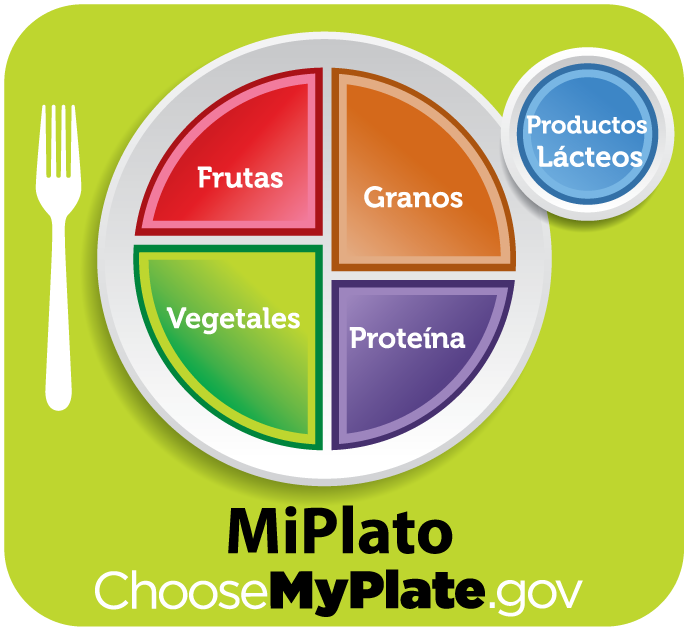Bahl: MiPlato aids Spanish speakers
The USDA released the Spanish complement of MyPlate, namely “MiPlato,” to reach Spanish-speaking consumers and serve as their reminder to make healthier choices at the table.
April 14, 2014
By now, most college students have heard of MyPlate, the most recent governmental icon encouraging proper nutrition, and probably grew up being educated on nutrition with the food pyramid as the guiding nutritional recommendation. Both of these recommendations are advertised in English, which is great, but what are the growing number of Spanish-speaking US residents supposed to follow? The USDA released the Spanish complement of MyPlate, namely MiPlato, to reach Spanish-speaking consumers and serve as their reminder to make healthier choices at the table.
Personally, I think this was a great move by the USDA, because our population of Spanish-speakers is growing and their needs have to be considered. With their language needs being addressed, this may subsequently target the issue of the obesity epidemic. A large proportion of low-income families in the U.S. are of Hispanic descent and there is a strong correlation between low-income and the prevalence of obesity. So, along with the clear benefits of educating the Spanish-speaking population on proper eating habits, the introduction of MiPlato could be instrumental in battling obesity.
As the Spanish-language partner to MyPlate, MiPlato offers all of the same information and advice on nutritional topics through informational printouts, childhood learning activities, nutrition suggestions and healthy recipes. Topics range from how to keep active, clarifying caloric confusion, reducing dessert intake and food safety. The government has made these tip sheets and general weight management information easily accessible on the Choose My Plate website and even caters to the growing use of social media with the Twitter handle @USDANutrición.
This accessibility and availability of information is crucial to fighting the low-income/obesity correlation. The U.S. Census shows that the there is a clear trend of low-incomes in Hispanic homes. Hispanic households are second to African-American households for lowest income but are, on average, nearly $18,000 less than Caucasian households and a shocking $29,000 less than Asian households. This income data can be paired with statistics from the CDC, Center for Disease Control, on obesity which show that Hispanics hold the second highest rate of obesity at 42.5 percent. Interestingly enough, the level of incomes inversely associate with the rates of obesity, as Asians have the highest median income and the lowest rate of obesity at 10.8 percent. The question that comes with this data is “Why?” Why do low-income households have a higher prevalence of obesity than higher incomes and how can it be addressed?
The Food Research and Action Center explains why low-income households and food insecure people have a higher risk of obesity. There are many factors working within this relationship. First of all, low-income neighborhoods often have fewer farmer’s markets and grocery stores and more fast food restaurants. When grocery stores are present, the fresh, healthy food is often more expensive than refined and processed products or the fresh produce available is rather poor quality, which turns customers away. The fast food options are cheap and fast but offer more fat and empty carbohydrates than essential vitamins and minerals. This low nutrient density is a key factor in developing obesity. Beyond the directly related food issues, there are more complex components including lower physical activity and higher levels of stress. Schools in low-income areas may spend less time and money on physical activities and transportation may be an issue to get children to sports practices. Stress may cause problems due to financial and emotional strain, which may cause metabolic and hormonal changes that lead to weight gain.
As can be deduced from all the data, the relationship between low-income and obesity is a highly complex problem that needs to be addressed from many different standpoints. However, from the nutrition angle, the MiPlato icon with informational resources is a promising solution to the language barrier keeping many citizens from being properly educated. By educating children and parents on proper nutrition, portions and food groups in a fun, interesting and memorable way, the rates of obesity can be reduced. As the saying goes — “knowledge is power” — so by simply equipping the Spanish-speaking population with the information they need to make healthy decisions, I think a noticeable change can be made.







